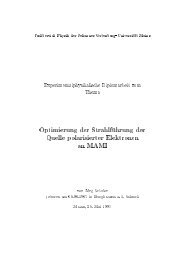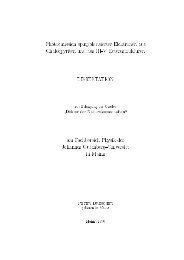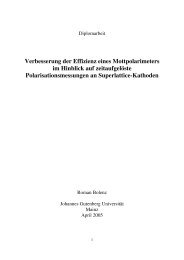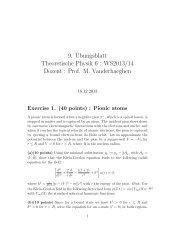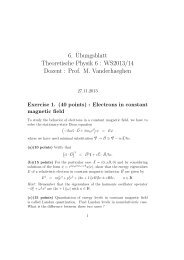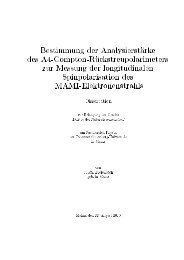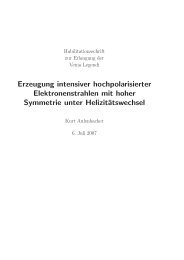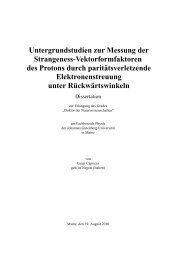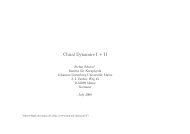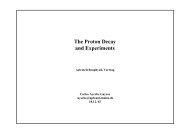EFFECTIVE FIELD THEORIES FOR VECTOR PARTICLES AND ...
EFFECTIVE FIELD THEORIES FOR VECTOR PARTICLES AND ...
EFFECTIVE FIELD THEORIES FOR VECTOR PARTICLES AND ...
You also want an ePaper? Increase the reach of your titles
YUMPU automatically turns print PDFs into web optimized ePapers that Google loves.
24 power counting and regularization<br />
external momenta. Therefore, one can simply replace the integral H by<br />
its IR-regularized part<br />
H IR = H − R = I , (3.9)<br />
considering that the part R can be compensated by redefined parameters<br />
of the most general Lagrangian. Note that the splitting might introduce<br />
additional divergences in I and R which cancel in the sum I + R. In<br />
general, infinities are neglected according to the so-called ̃MS renormalization<br />
scheme, i.e. terms proportional to the infinite quantity<br />
λ = 1<br />
16π 2 { 1<br />
n − 4 − 1 2 [ln(4π) + Γ′ (1) + 1]} (3.10)<br />
are set to zero, arguing that they also can be absorbed in counter-terms of<br />
the most general Lagrangian. The part R in equation (3.9) is also denoted<br />
subtraction term since the regularized integral is obtained by subtracting<br />
R from the original integral. Furthermore, the regular part R satisfies<br />
the Ward identities separately from I and, hence, the IR regularization<br />
preserves the symmetries of the theory.<br />
In the original approach of Becher and Leutwyler [17], the crucial step<br />
is to calculate the singular part I directly in order to obtain the regularized<br />
integral, see also [68]. This turns out to be difficult in generalized<br />
situations. However, the subtraction terms can also be obtained order<br />
by order by expanding the integrand in equation (3.5) directly in small<br />
Lorentz-invariant quantities, say M 2 and p 2 − m 2 , and interchanging<br />
the series and the integration. It has been shown that this procedure is<br />
equivalent to the original approach order by order, see [18] for details. In<br />
the following, this approach is termed reformulated IR regularization.<br />
In practical calculations, the reformulated procedure provides an<br />
easier method of finding the renormalized version of the results. This<br />
concerns the integration as well as the identification of R, e.g. in two-loop<br />
calculations. After a standard Passarino-Veltman reduction [72, 73] in n<br />
space-time dimensions, the scalar integrals containing only pion masses<br />
and small momenta, such as the external photon momentum, are kept,<br />
whereas integrals containing only large masses and external momenta<br />
are discarded. This implies that diagrams with loops containing only<br />
heavy degrees of freedom can be discarded directly. Next, integrals<br />
which contain both scales are calculated in n dimensions as explained<br />
above up to a sufficient order in the small invariant quantities. Finally,<br />
the subtraction terms are obtained by the expansion around n = 4,<br />
neglecting divergences according to ̃MS scheme. Note that even after



